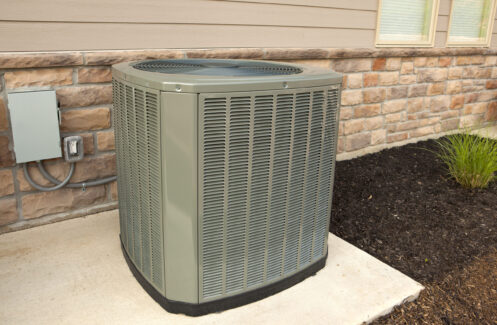
A home renovation makes it easy to redesign your house to better suit your unique tastes and style preferences. Some strategic renovations, like modernizing your home with energy-efficient appliances, may even increase the property value and lower your utility costs. However, there are several key factors you need to consider regarding your HVAC system when doing a remodel. Heating and cooling directly affect your home’s comfort, energy efficiency, and air quality.
1. Consider the Capacity of the HVAC System
Even minor home renovations can make a major difference in your heating and cooling systems. Take, for example, adding a small room to your home. Without proper preparation, you may end up with more square footage than your home’s existing HVAC systems can handle. Systems that are too small have to work harder to keep the entire home at a comfortable temperature; this can skyrocket your energy costs.
On the other hand, a system that is too large will end up getting stuck in the repetitive cycle of turning on and off, increasing energy consumption and leading to premature wear and tear. This shortens the system’s useful life and necessitates more frequent and expensive repairs.
A home renovation makes for the perfect time to hire an HVAC technician to determine whether your current HVAC systems were initially calculated correctly. A technician can also perform tests and calculations to determine whether the systems have the capacity to heat and cool your home after the renovation. You may find it necessary to upgrade your existing units or install multiple ones.
2. Consider the Ductwork
Is the renovation going to change the layout of your home? If so, there’s a good chance a technician will need to adjust or extend the HVAC’s ductwork. Depending on the amount of added square footage, you may even need to install a second heating and cooling system, which will require running new ducts.
Having a technician evaluate the status of your home’s ductwork is essential to achieving optimal heating and cooling. There are several instances when extending ductwork actually hurts the efficiency of HVAC systems. When enclosing a sunroom, for example, it is usually preferable to install new ductwork rather than expanding the existing system. The same applies to turning attic space into a bedroom or climate-controlled storage area. A certified technician will know whether it’s best to extend the ducts or add new ones.
Even if you don’t need adjusted or extended ducts, a technician should still check the ductwork before or during the renovation for air leaks. Experts agree that the average home loses up to 30% of the air that flows through its ductwork as a result of air leaks. Sealing these leaks during a home renovation can prevent this air loss, lowering your energy costs and improving the efficiency of the heating and cooling systems.
3. Consider the New Layout
Choosing the best layout for your house depends on thinking about how the new design will affect the flow of warm and cool air. This is especially true if you plan to move around walls and open up certain spaces. It’s easier to maintain a comfortable temperature in homes with good insulation, open floor plans, and a central corridor. Homes with a central corridor also maximize usable floor space and benefit from enhanced accessibility and ventilation.
If you want to build a new room but don’t know whether to add a floor or extend the existing level, you may want to stick with the latter. Single-story homes generally have lower utility bills than multi-level houses. If you don’t have the space to extend the existing level, you can always opt for a ranch-style or split-level home; these are the most efficient layout options for multi-level structures.
4. Consider an Upgrade for Older Units
A home renovation is an ideal time to upgrade outdated HVAC systems. Even if the renovation isn’t going to add any additional living space to your home, replacing the heating and cooling systems with more energy-efficient models will save you a significant amount of money on energy bills.
One of the best things about doing a home renovation is the ability to use a home equity loan to pay for the costs. And fortunately, you can even use the money from the loan to pay for new heating and cooling systems. If you choose to go this route, make sure to buy systems that come with full warranties. This will allow you to install brand-new energy-efficient systems without having to worry about the cost of repairs or replacements over the next several years.
5. Consider a Mini-Split System
Mini-splits are becoming more popular as a result of the superior humidity regulation they provide. This is especially beneficial in areas like Selma that experience high humidity. They are a good option for Selma’s older homes because you can retrofit them without having to carry out major renovations.
Mini-split systems provide precise, energy-saving climate control. In the absence of ductwork, they offer the best solution. They are also useful for construction over garages and conversions of attics. Some homeowners even use them to heat and cool detached guest homes. A mini-split system can both heat and cool a space, which allows you to save money on energy bills by preventing unnecessary heating or cooling of unused areas.
6. Consider Zoned Heating and Cooling
If you want the advantages of a mini-split system but don’t want to replace your existing central heating and air, you can install zoned heating and cooling. These setups partition your existing HVAC system or several mini-split devices into separate climate control areas. Both ducted and ductless versions exist. Multi-zone systems work better for achieving targeted temperature control throughout an entire home than most other systems do. In addition, they allow household members to establish the comfort settings they prefer.
7. Consider How to Protect the HVAC During a Renovation
No matter how small or large of a renovation you’re doing, protecting the HVAC systems from dust and other debris should be a top priority. Particles from sanded drywall, broken tiles, and cut wood can easily shorten the life of HVAC systems and are detrimental to indoor air quality.
To keep your home’s HVAC systems protected during a home renovation, use the following tips:
- Close vents and air registers
- Seal ducts
- Use high-quality air filters
- Cover the outdoor unit
- Create dust barriers
Carefully planning your next home renovation in Selma or the Greater San Antonio area is a great way to increase your home’s value, improve its aesthetics, and make it more energy efficient. To ensure your HVAC systems play a positive role in the outcome of the renovation, you need a certified technician to perform inspections before, during, and afterward. Here at Beyer Air Conditioning & Heating, we specialize in installation, maintenance, and repair services for all makes and models of heating and cooling systems. We are experts in sheet metal work, VRF systems, indoor air quality testing, and the cleaning and repair of air ducts. If you need a certified technician for your next home improvement project, contact us today.



